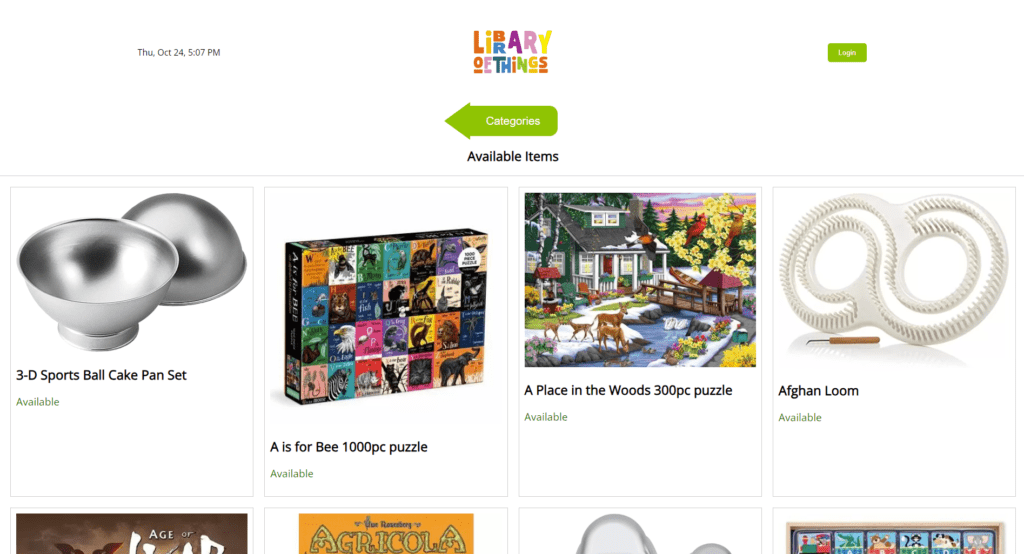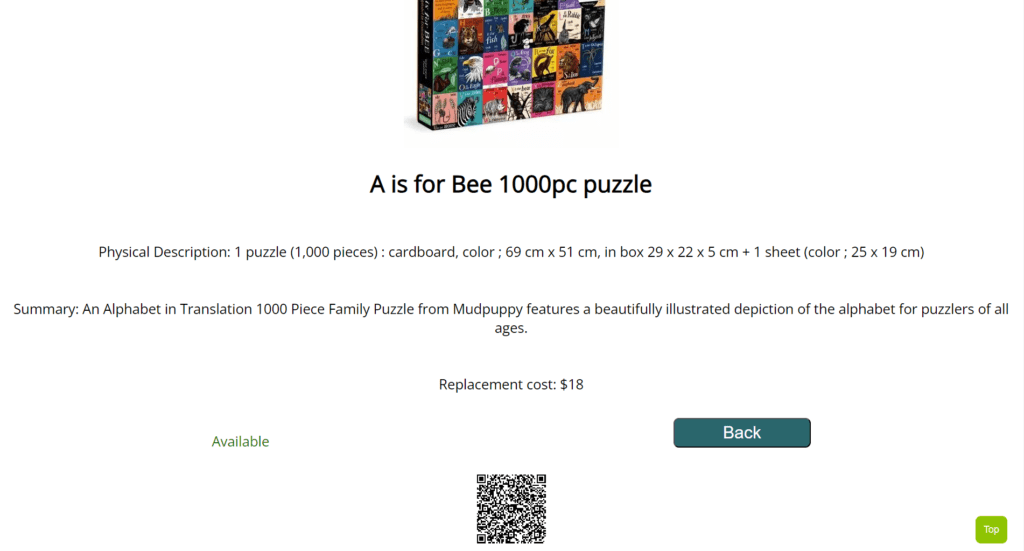When it comes to making the library’s collections accessible and engaging, technology can be a powerful ally. At the Mount Prospect Public Library, I developed the Library of Things Kiosk Software, a custom solution designed to make our Library of Things collection easier for patrons to explore and enjoy. This kiosk is now proudly displayed in the library’s lobby, providing a seamless touch-screen interface for quick searches and exploration.
Project Goals
The main goal of the Library of Things Kiosk was to create a user-friendly, visually appealing, and informative interface for patrons. Here’s what I set out to accomplish:
- Touch-Screen Application: The kiosk needed to be intuitive, using a touch-screen interface for ease of navigation.
- Portrait Mode: To optimize for available space, the interface was designed for a portrait-oriented display.
- API Integration: The application had to integrate seamlessly with our existing WordPress custom post type API, which houses the Library of Things data.
- Visual Appeal: An attract screen would display full-screen images of randomly selected items, drawing in patrons and showcasing the variety available.
- Item Browsing & Details: Patrons should be able to filter, search, and view detailed information about each item, including availability and catalog links.
Project Features
Attract Screen

One of the standout features of the kiosk is the Attract Screen. When the kiosk is idle, it cycles through full-screen images of randomly selected items from our Library of Things collection. This not only draws attention but also showcases the unique and diverse items we have available. The screen is visually engaging and designed to encourage patrons to start interacting with the kiosk.
All Items Display

The core browsing experience begins with the All Items Display, which shows a grid view of all items in the collection. Each item is presented with:
- A thumbnail image
- The title
- Its current check-out status
The interface allows patrons to apply filters to narrow down the selection, making it easy to find what they’re looking for.
Details Display

Clicking on an item brings the user to the Details Display, which provides an in-depth look at the selected item. The detailed view includes:
- A large image for better viewing
- The title and a short summary of the item
- Check-out status to indicate if it’s currently available
- A QR code that links directly to the item’s entry in the library catalog, allowing patrons to find more information or place a hold using their mobile devices
- A back button for easy navigation
Data Integration & Real-Time Updates
The Kiosk Software pulls information from the WordPress custom post type API, which houses the Library of Things data. To ensure the accuracy of item availability, I implemented a server-side function that interacts with the SirsiDynix API, allowing the kiosk to display real-time availability status for each item.
Technology Stack
The project was built entirely from scratch using JavaScript, following an MVC (Model-View-Controller) design pattern. This structure helped to organize the codebase, making it easier to manage data, interface components, and user interactions separately. Here’s a breakdown of the technical components:
- JavaScript: The primary programming language, handling all aspects of the interface, including touch interactions.
- WordPress API: Source of item data for the Library of Things collection.
- SirsiDynix API: Provides real-time check-out statuses, ensuring the kiosk’s information is always up-to-date.
Current Usage & Impact
The kiosk has become a valuable addition to the library, enhancing the patron experience by making our Library of Things collection accessible and easy to navigate. Patrons can quickly find and explore a variety of items, from tech gadgets to unique tools, all through an engaging and intuitive touch interface. Having the software ready for launch created a smooth transition and has been well-received by library visitors.
Conclusion
The Library of Things Kiosk Software is a testament to how technology can enhance library services, making resources accessible, user-friendly, and visually engaging. By leveraging APIs, custom programming, and an attractive interface, this project has bridged the gap between digital resources and physical items, encouraging patrons to explore what the library has to offer.